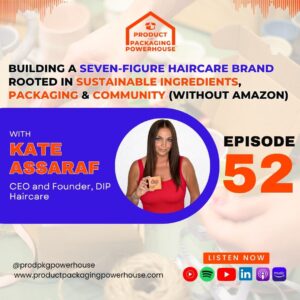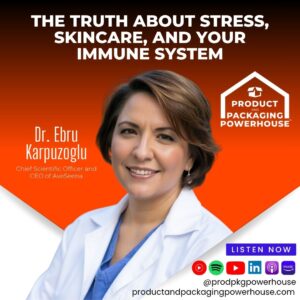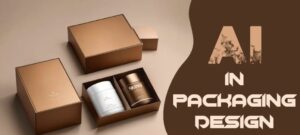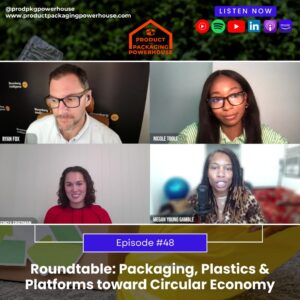What You’ll Learn in This Blog:
- The 5 most innovative sustainable packaging materials redefining the beauty industry in 2025
- Real-world examples of beauty brands leading the shift to eco-friendly packaging
- How sustainable packaging can drive consumer loyalty, reduce waste, and future-proof your brand
INTRODUCTION
If you’re still treating packaging as a pretty afterthought, 2025 is here to shake things up. Today’s beauty consumer isn’t just asking what’s in the jar – they’re asking what the jar is made of, how it was sourced, and what happens to it after use. Recent study by Shorr show:
- 90% of shoppers are more likely to buy from brands with eco-friendly packaging
- Over half have actively chosen products for their sustainable packaging
- 43% are willing to pay more for it
- 39% have already switched brands based on packaging alone
In fact, nearly 7 in 10 consumers now expect sustainability to be a standard, not a selling point. It’s not just a consumer wave, it’s an industry standard. Ulta Beauty is aiming for 50% recyclable, refillable, or bio-based packaging by 2025.
Put simply – sustainable packaging is no longer optional. It’s a consumer expectation. It’s climate responsibility. And increasingly, it’s regulatory law. To meet this moment, beauty brands, both indie and established, are turning to innovative, low-impact materials that protect the product and the planet.
5 Materials Redefining Beauty Packaging
- Bioplastics and Bio-Based Plastics: Bioplastics are made from renewable sources like corn, sugarcane, or algae instead of petroleum, helping reduce carbon emissions and fossil fuel use. Materials like sugarcane-derived polyethylene offer the same feel as traditional plastic but with a smaller environmental impact. Some types, like PLA and PHA, are biodegradable, if disposed of correctly. Brands like Dr. Lipp use 100% sugarcane bioplastic tubes to combine a premium look with eco-responsibility. Bottom line is that bioplastics are a strong sustainable option, when paired with proper disposal systems.
- Mushroom Mycelium Packaging: What if your packaging could grow and then safely return to the Earth? That’s the promise of mycelium, the root network of mushrooms, which can be grown into solid packaging forms. It’s an eco-friendly alternative to styrofoam for trays and inserts, breaking down naturally within 45 days and even enriching soil. Brands like Haeckels use it for secondary packaging, proving that this “grown” material is both protective and planet-positive. Mycelium packaging literally comes from nature and returns to it, leaving no waste behind.
- Paper-Based & Fiber Packaging: Paper, cardboard, and plant fiber-based packaging are seeing a renaissance in beauty. Brands are replacing plastic tubes, bottles, and jars with high-strength paper or molded fiber alternatives. These include innovations like paper-based tubes for creams and cleansers, pressed paper compacts, and cardboard refill capsules. It also satisfies consumer preferences: over half of shoppers value packaging that is recyclable or made from recycled material, and about one-third specifically favor paper-based packaging (source: shorr.com) As regulators push to curb plastics, fiber-based packaging provides a ready solution that is both tactile and eco-friendly.
- Refillable and Reusable Packaging Designs: Sometimes the most sustainable package is the one you don’t throw away. Refillable packaging has become a major innovation in both primary and secondary packaging for beauty. From jars and compacts to deodorant sticks and shampoo pouches, these designs allow customers to keep durable containers and simply restock with minimal-material refills. Brands like Dove, Secret, and Kjaer Weis are leading the way, and in-store refill stations are on the rise. When well-executed, refills reduce packaging waste, lower material costs, and strengthen brand loyalty, as long as brands make reuse easy, intuitive, and rewarding.
- Recycled and Ocean-Bound Plastics: Another revolutionary approach is turning waste into packaging. Post-consumer recycled (PCR) plastics are being widely adopted, reusing plastic that’s already been used once to create new bottles and jars, which cuts down virgin plastic production and can significantly lower carbon emissions. Going a step further, some beauty brands are sourcing ocean-bound plastic, plastic waste collected from coastal areas or oceans, to both clean up pollution and give it a second life as packaging. This includes materials like recycled PET, PP, or HDPE that have been rescued from becoming marine litter and processed into new packaging components. A great example is skincare brand LATHER, which in 2024 introduced a line of products in bottles made of 100% recycled ocean-bound plastic, helping set a new standard for the industry.
Each of these materials and approaches addresses the sustainability challenge from a different angle, be it reducing carbon emissions, enhancing recyclability, or eliminating waste altogether.
Examples of Brands Pioneering Eco-Friendly Packaging
- The Rootist, a 2024-launched haircare brand, uses a mushroom mycelium tray to cradle its products, a compostable alternative to plastic inserts that aligns with the brand’s “root” philosophy. Read more about it here
- Nuon Medical (California) – By turning sunflower seed waste into a bio-based lid for its skincare line, Nuon is reducing its carbon footprint while giving the consumer a sensory, story-driven experience. This innovation earned them a 2025 packaging award for sustainable material sourcing. Read more here
- ICS Cosmetics (New York) – ICS’s curvy panstick uses 100% recyclable PP, showing how even color cosmetics can be zero-waste compatible. Their designs cater to fast-turn, trend-focused launches that don’t compromise the planet. Read more here
- Unilever x Dove (Global, U.S. rollout) – The Dove smart label pilot in the U.S. combines sustainability + safety. The label not only uses recyclable material but also tells consumers if their product’s been heat-compromised in transit, a subtle but smart packaging upgrade. Read more here
- L’Oréal USA / Lancôme (Recent) – Lancôme’s latest SPF features a self-repairing UV coating that extends product life and reduces wasteful discards. More durable packaging = fewer repurchases = reduced environmental impact. Smart and luxe. Read more here
CONCLUSION
In 2025, sustainable packaging isn’t a trend, it’s table stakes. From bioplastics to mushroom mycelium and refillable systems, brands are proving that innovation and environmental responsibility can go hand in hand. As consumers grow more conscious and regulations tighten, the pressure and opportunity for beauty brands to act has never been greater. Choosing the right materials, designing for circularity, and telling an authentic story around your packaging are no longer optional. They’re essential to staying relevant, reducing waste, and building lasting trust with today’s values-driven shopper.
If your brand hasn’t started the shift toward low-impact packaging, now is the time. The good news? You don’t have to do it alone. Let’s work together to build packaging that performs, protects, and paves the way for a greener tomorrow.
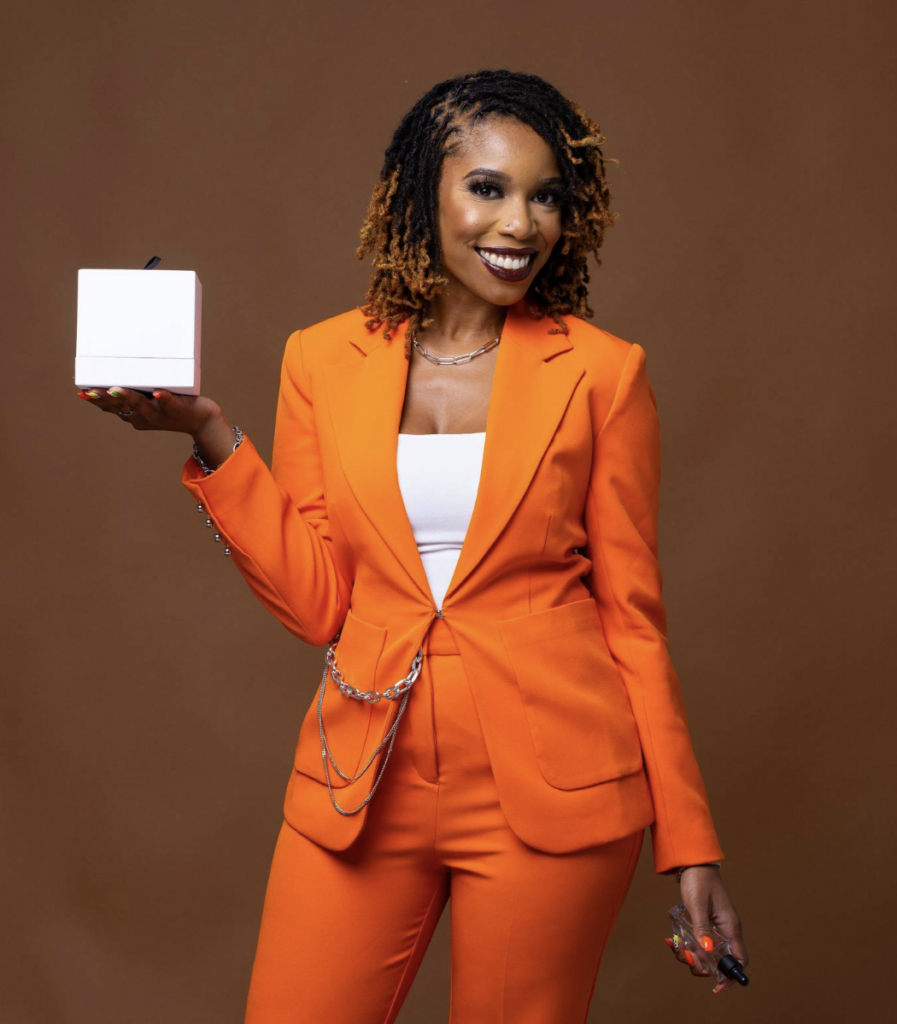
Megan Young Gamble, PMP® is a forward-thinking packaging and project management veteran with more than 10 years’ of experience transforming mere ideas into consumer product goods for today’s leading beauty, wellness, and personal care brands. Known amongst colleagues and clients for her perseverance and “see it through” mentality, Megan The Project ExecutionHER® is the owner and principal consultant of GLC, packaging & project execution team for CPG brands, Co-Owner of Pallet Pros, and Host of Product & Packaging Powerhouse Podcast.
- [FREEBIE] Learn about “day in the life” of a Packaging Project Manager → Get our “Starter Packaging PM Freebie” [link] https://glc.ck.page/thestarterpackagingprojectmanager
- Subscribe & Access our Video Vault YouTube Channel [ link] https://bit.ly/GLConYouTube
- Join our Email List [link] https://glc.ck.page/55128ae04b
- Follow and Connect with Megan on LinkedIn [link] https://linkedin.com/in/megangamble
- Learn about GLC, Packaging & Project execution firm for CPG brands http://www.getlevelconsulting.com
- Work with Me @ GLC, Schedule Discovery Call https://calendly.com/getlevelconsulting/15-minute-insight-session


